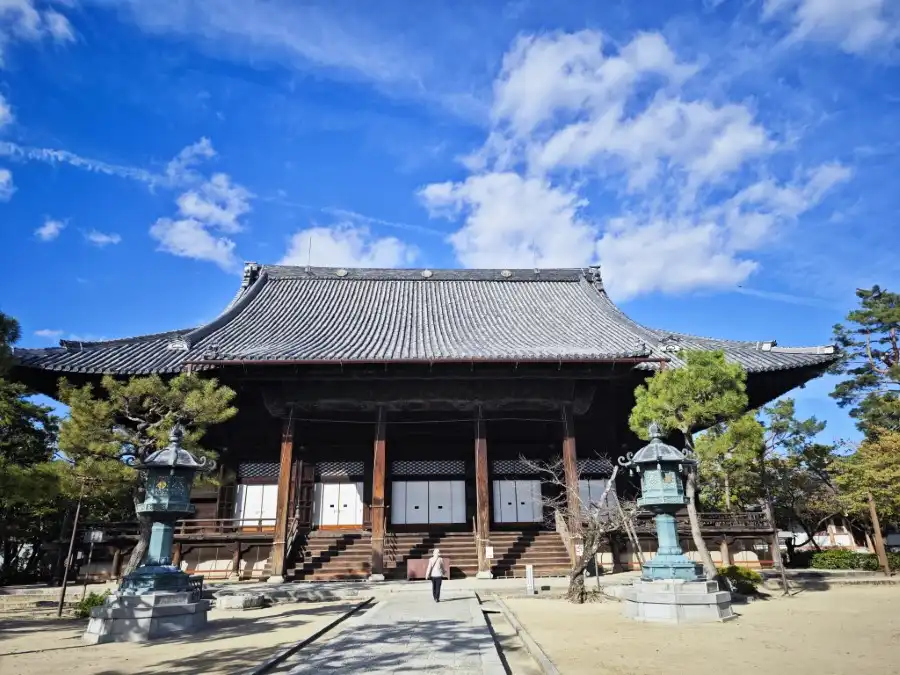Chionji Temple, also known as Hyakumanben Chionji, is a temple of the Jodo sect. Although the name is similar to the famous Chion-in Temple, it is a different temple of the same sect.


Honen, the founder of the Jodo sect, lived in 1175 at Jinguji Temple in Kamo, the predecessor of Chionji temple.
In 1212, Honen Shonin passed away. The temple was named Chi(知)on(恩)ji Temple because the disciples of Honen Shonin must “know(知)” “favor(恩)” in order to repay their teacher’s kindness.
In 1331, a great earthquake occurred in Kyoto. At that time, by the order of Emperor Godaigo, the chief priest of the temple recited a million prayers for seven days and seven nights at the palace. The plague was then quelled. So the Emperor Godaigo bestowed upon the imperial title of “Hyakumanben” (one hundred ten thousand ten thousand times).
After several relocations, it settled in its current location in 1662 during the Edo period.
The current Mikageido, the centerpiece of the temple complex, was built in 1662. In 1756, it was enlarged and made entirely of zelkova wood.

On the 15th of every month, a handmade crafts market opens and the temple grounds become full of people.
The grave of Torii Mototada, a warlord who died in the Battle of Fushimi Castle, is located in this temple. He was a vassal of Tokugawa Ieyasu. In the battle of Fushimi Castle, he holed up in the castle with 2,300 men against 40,000 enemy soldiers. In the end, however, he and all the others committed suicide. The floorboards wet with blood at that time can be seen as ceiling boards at Yogen-in temple, Genko-an Temple, Hosenin Temple, and other places.